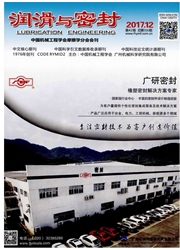

 中文摘要:
中文摘要:
油气长输管道在运行过程中受腐蚀、结垢的影响,管道内壁表面状态会发生显著的变化,进而会引起管道内流场和沿程流体摩擦阻力的变化,目前在这方面的研究比较欠缺。基于计算流体动力学软件FLUENT,数值模拟在腐蚀、结垢条件下管道内壁表面状态发生改变后,管道流体摩擦阻力的变化情况。结果表明:管道结垢后在内壁形成凸起,流通面积减小,沿程摩擦阻力系数变小,单位长度压降和总的能量损失增大;管道腐蚀后在内壁形成凹坑,沿程摩擦阻力系数和单位长度压降均减小,说明形成腐蚀坑后不规则表面可能具有一定的减阻效果,研究可为基于表面纹理的管道减阻提供一定的参考依据。
 英文摘要:
英文摘要:
The internal surface features of the long-pipeline during its running process will change significantly by the influence of cor- rosion and fouling, and thus its flow field will change to result in the change of the fluid frictional resistance correspondingly. Currently, there are few studies in this field. The frictional resistance of inner pipeline after corrosion and fouling occur was analyzed through numerical simulation by FLUENT. The simulation results show that the circulation area of the pipe is decreased after fouling, and the drag coefficient along the pipeline becomes smaller, but the pressure drop per unit length and the total energy loss are increased. In the case of corrosion, the drag coefficient along the pipeline and pressure drop per unit length are decreased, indicating that tie pipe with irregular surface may have the position effect of drag reduction after adding corrosion pits. The research provides a reference for pipeline drag reduction based on surface texture design.
 同期刊论文项目
同期刊论文项目
 同项目期刊论文
同项目期刊论文
 期刊信息
期刊信息
